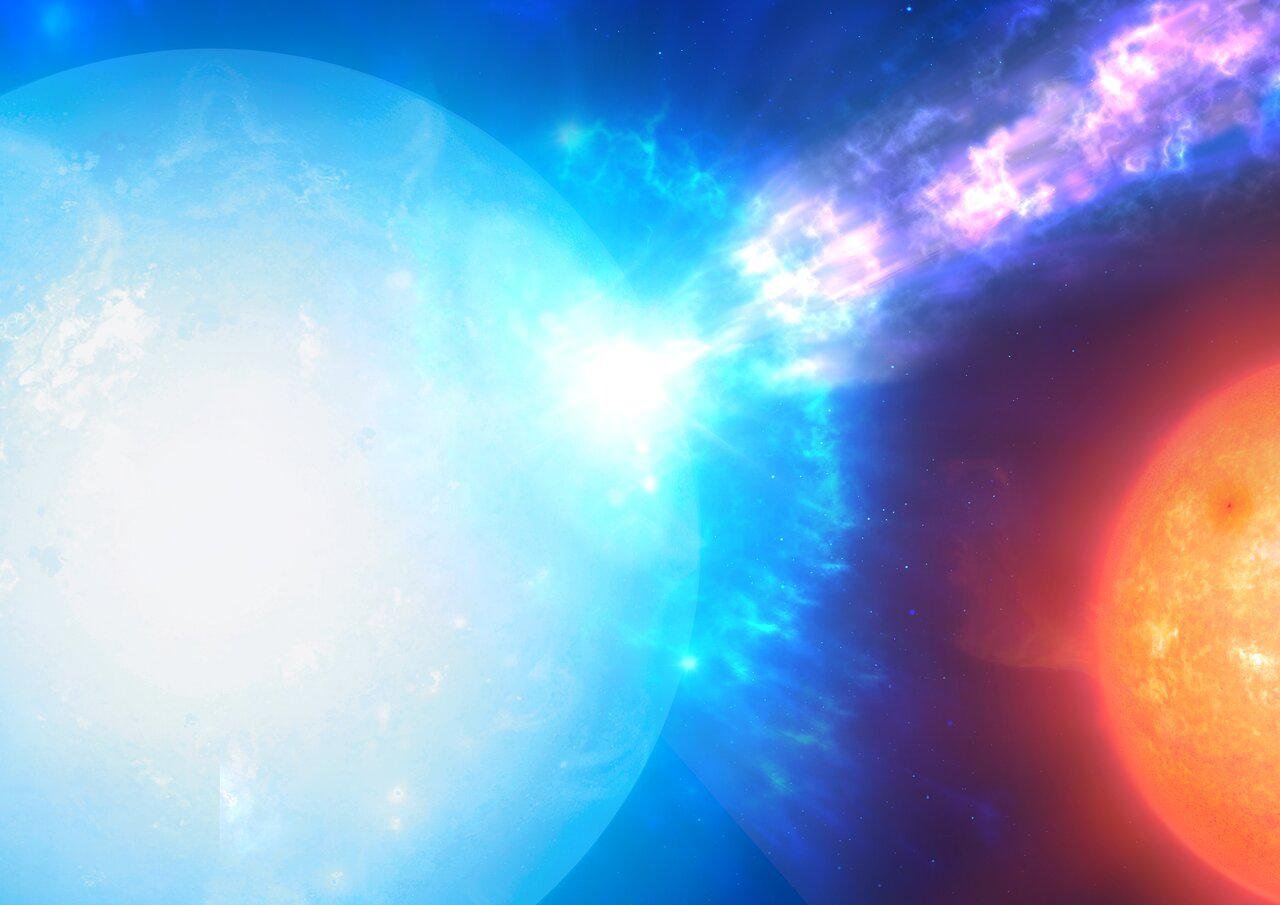*This text was written by a columnist. TecMundo; finally learn more.
For the first time, a new type of starburst has been observed: micronova!
Micronovas are associated with late eruptions in white dwarfs, such as novae and type Ia supernovae. But what are white dwarfs? They are stellar remnants. So, this is what’s left when low-mass stars like the Sun die.
And the main properties of these objects are that they are small, very dense, do not burn hydrogen and are sustained by electron degeneration pressure. This means that the weight of the white dwarf is supported by electrons compressed together. But there is a limit to the weight that electrons can support.
Even though they are dead objects, there are events that can cause explosions in white dwarfs. By then we knew new and supernovas. The first type of explosion discovered was novae, named after “new” objects in the sky. Even without knowing the physical origin of these objects, the explosion turned out to be a “new” star in the sky, giving rise to this name. Then the supernova was discovered. The name implied that the explosion was more energetic than the nova itself.
We now know that both events occurred when white dwarfs stole material from a companion star. This new material can be burned in different types of explosions with different names. For Nova, newly accumulated (acquired) hydrogen burns over the entire surface of the white dwarf. A supernova occurs when the remaining hydrogen of the white dwarf is burned as well, and also when much of the material that could completely destroy the white dwarf is ejected from the object.
What is Mikronova?
As the name suggests, the explosion itself is less energetic than a nova and supernova. And the physical process is observed for the first time!
White dwarfs with very strong magnetic fields can redirect newly accumulated hydrogen to their poles, a process similar to the aurora borealis on Earth. Condensed at the poles, this hydrogen is burned locally. For the first time, it has been proven that hydrogen burning in white dwarfs can be done in isolated locations, not the entire object!
Sorry, although the name carries the word “micro”, this explosion is still very violent. We can burn 20,000,000 trillion kg of mass in a single micronova!
These eruptions are believed to be more common despite being observed for the first time, but are difficult to detect in time as they only last a few hours. By analyzing data from Durham University and TESS (Transiting Exoplanet Survey Satellite – NASA), the team behind this discovery noticed variations too fast to be novae or supernova. Then, with observations made using the VLT (Very Large Telescope – ESO), they confirmed that the origin of micronovas was white dwarfs and closed the theory of the origin of these new explosions.
Camila de Sa Freitascolumnist TecMundoHe holds bachelor’s and master’s degrees in astronomy. He is currently a PhD student at the European Southern Observatory (Germany). The distinctive Galaxy Coroner explores evolutionary scenarios for galaxies and possible changes in the production of stars. He is on social media as @astronomacamila.
Source: Tec Mundo
I am Bret Jackson, a professional journalist and author for Gadget Onus, where I specialize in writing about the gaming industry. With over 6 years of experience in my field, I have built up an extensive portfolio that ranges from reviews to interviews with top figures within the industry. My work has been featured on various news sites, providing readers with insightful analysis regarding the current state of gaming culture.













